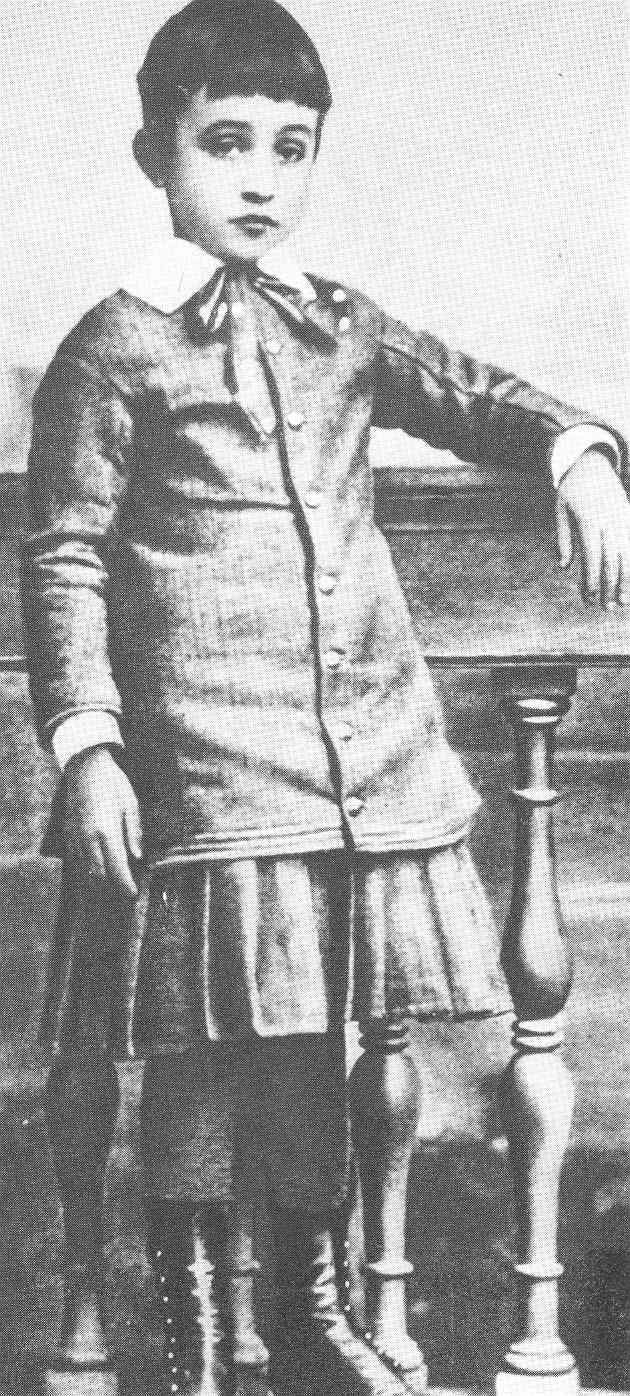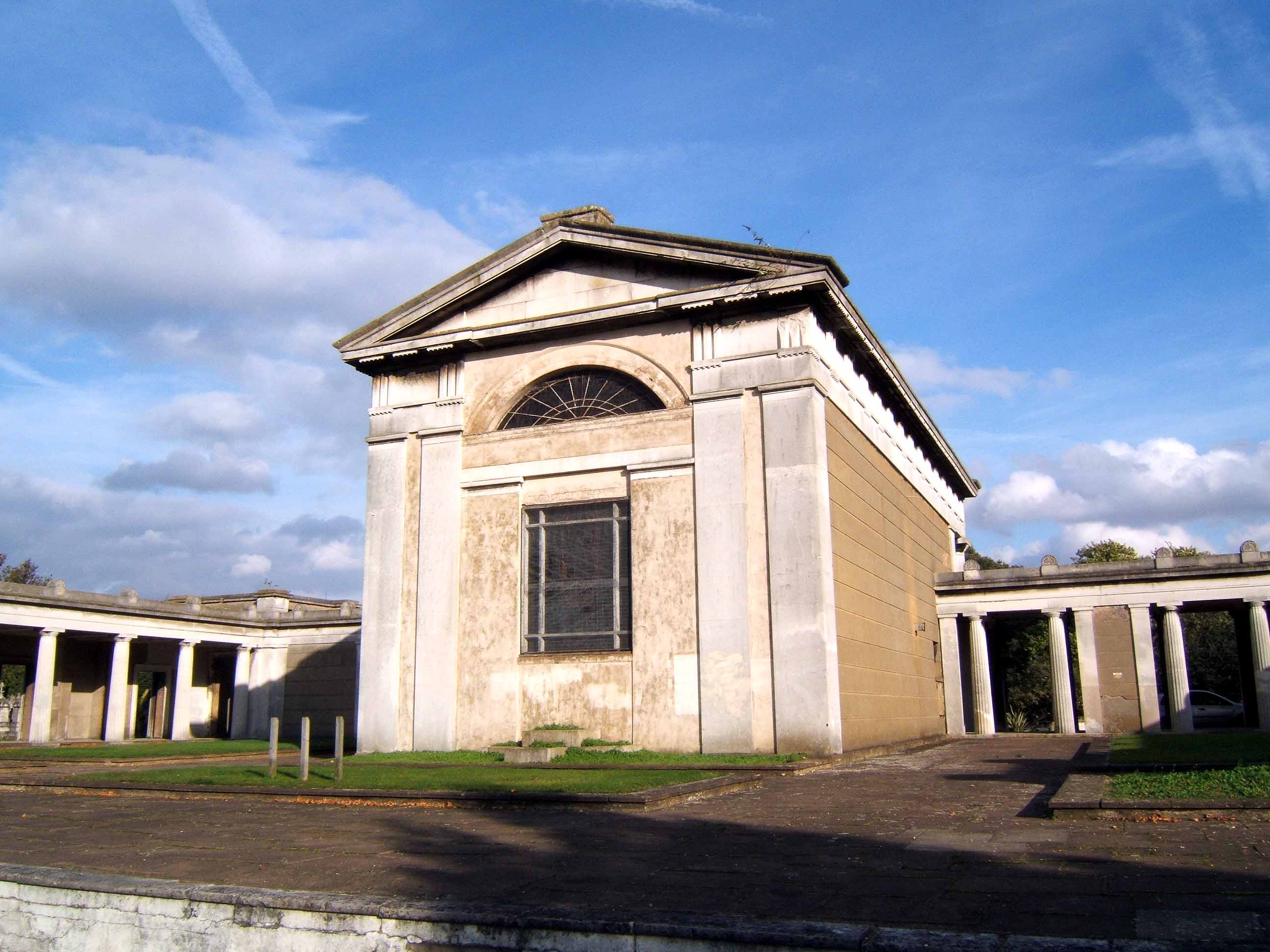|
Margaret Sinclair (nun)
Margaret Anne Sinclair, (29 March 1900 – 24 November 1925), religious name Mary Francis of the Five Wounds, was a Scottish Catholic nun of the Colettine Poor Clares. She was declared venerable by Pope Paul VI on 6 February 1978. Life Family Andrew Sinclair, from Edinburgh, husband to Elizabeth ('Leebie') Kelly, from Dundee, moved to Edinburgh in 1897 from Dundee. They had six children. The eldest male, John, the eldest female, Isabella (Bella). Margaret Sinclair was their third child, and second eldest female. Born on 29 March 1900, at nine in the evening, in the two roomed flat beneath the ground floor, at 24 Middle Arthur Place, Edinburgh. She had three younger siblings: Andrew, the second eldest male; the youngest female Elizabeth (Lizzie); and, finally, Lawrence. Before Lawrence was born, Margaret's parents lost two children. First, James, who died aged only one year old; then, Mary, alive for only a matter of days. Parents Andrew and Elizabeth were married on New ... [...More Info...] [...Related Items...] OR: [Wikipedia] [Google] [Baidu] |
The Venerable
''The Venerable'' often shortened to Venerable is a style, title, or epithet used in some Christianity, Christian churches. The title is often accorded to holy persons for their spiritual perfection and wisdom. Catholic In the Catholic Church, after a deceased Catholic has been declared a servant of God by a Bishop (Catholic Church), bishop and proposed for beatification by the pope, such a servant of God may next be declared venerable ("heroic virtue, heroic in virtue") during the investigation and process leading to possible canonization as a saint. A declaration that a person is venerable is not a pronouncement of their presence in Heaven. The pronouncement means it is considered likely that they are in heaven, but it is possible the person could still be in purgatory. Before one is considered venerable, one must be declared by a proclamation, approved by the pope, to have lived a life that was "heroic in virtue" (the theological virtues of faith, hope, and charity and the ... [...More Info...] [...Related Items...] OR: [Wikipedia] [Google] [Baidu] |
Biscuit
A biscuit is a flour-based baked food item. Biscuits are typically hard, flat, and unleavened. They are usually sweet and may be made with sugar, chocolate, icing, jam, ginger, or cinnamon. They can also be savoury, similar to crackers. Types of biscuit include biscotti, sandwich biscuits (such as custard creams), digestive biscuits, ginger biscuits, shortbread biscuits, chocolate chip cookies, chocolate-coated marshmallow treats, Anzac biscuits, and speculaas. The term "biscuit" is used in many English-speaking countries including Britain, Ireland, Australia, New Zealand, India, and South Africa. In the United States and parts of Canada, sweet biscuits are nearly always called "cookies" and savoury biscuits are called "crackers", while the term '' biscuit'' is used for a soft, leavened quick bread similar to a savoury version of a ''scone''. Variations in meaning of ''biscuit'' The word ''biscuit'' is used to refer to a broad range of primarily flour-based foods ... [...More Info...] [...Related Items...] OR: [Wikipedia] [Google] [Baidu] |
Pope Pius XII
Pope Pius XII (; born Eugenio Maria Giuseppe Giovanni Pacelli; 2 March 18769 October 1958) was the head of the Catholic Church and sovereign of the Vatican City State from 2 March 1939 until his death on 9 October 1958. He is the most recent pope to take the Papal name, pontifical name "Pius". The papacy of Pius XII was long, even by modern standards; it lasted almost 20 years, and spanned a consequential fifth of the 20th century. Pius was a diplomat pope during the destruction wrought by the Second World War, Aftermath of World War II, the recovery and rebuilding which followed, the beginning of the Cold War, and the early building of a new International order, international geopolitical order, which aimed to protect human rights and maintain global peace through the establishment of international rules and institutions (such as the United Nations). Born, raised, educated, ordained, and resident for most of his life in Rome, his work in the Roman Curia—as a priest, then Bi ... [...More Info...] [...Related Items...] OR: [Wikipedia] [Google] [Baidu] |
Beatification
Beatification (from Latin , "blessed" and , "to make") is a recognition accorded by the Catholic Church of a deceased person's entrance into Heaven and capacity to intercede on behalf of individuals who pray in their name. ''Beati'' is the plural form, referring to those who have undergone the process of beatification; they possess the title of "Blessed" () (abbreviation "Bl.") before their names and are often referred to in English as "a Blessed" or, plurally, "Blesseds". It is the third stage of the ordinary process of Canonization#Since 1983, official recognitions for Catholic saints: Servant of God, Venerable#Catholic, Venerable, Blessed, and Saint. History Local Bishops in the Catholic Church, bishops had the power of beatifying until 1634, when Pope Urban VIII, in the apostolic constitution ''Cœlestis Jerusalem'' of 6 July, reserved the power of beatifying to the Holy See. Since the reforms of 1983, as a rule, (for non-martyred Venerables) one Miracle, miracle must ... [...More Info...] [...Related Items...] OR: [Wikipedia] [Google] [Baidu] |
Saint Patrick
Saint Patrick (; or ; ) was a fifth-century Romano-British culture, Romano-British Christian missionary and Archbishop of Armagh, bishop in Gaelic Ireland, Ireland. Known as the "Apostle of Ireland", he is the primary patron saint of Ireland, the other patron saints being Brigid of Kildare and Columba. He is also the patron saint of Nigeria. Patrick was never formally Canonization, canonised by the Catholic Church, having lived before the current laws were established for such matters. He is venerated as a saint in the Catholic Church, the Lutheran Church, the Church of Ireland (part of the Anglican Communion), and in the Eastern Orthodox Church, where he is regarded as equal-to-apostles, equal-to-the-apostles and Enlightener of Ireland. The dates of Patrick's life cannot be fixed with certainty, but there is general agreement that he was active as a missionary in Ireland during the fifth century. A recent biography on Patrick shows a late fourth-century date for the saint i ... [...More Info...] [...Related Items...] OR: [Wikipedia] [Google] [Baidu] |
Liberton, Scotland
Liberton is a suburb of Edinburgh the capital of Scotland. It is in the south of the city, south of The Inch, east of the Braid Hills and west of Moredun. Liberton Community council's area includes Liberton, Gracemount, Kaimes, Alnwickhill and Mortonhall. Historically the parish covered a wide area and included Burdiehouse, Gilmerton, Niddrie, Edinburgh, Niddrie and Straiton, Edinburgh, Straiton. Incorporated into the city in 1920, the area was once home to Arthur Conan Doyle, who lived in a small cottage near the Braid Burn, which is now inside the grounds of the Cameron Toll Shopping Centre car park and is now a small school. Increased development in the area from the mid 1970s to current times has seen Liberton develop into a popular choice for homeowners with areas such as Double Hedges, Alnwickhill and Howdenhall often representing better value for money than locations closer to the city centre. In recent years once thriving community pubs and hotels have closed with ... [...More Info...] [...Related Items...] OR: [Wikipedia] [Google] [Baidu] |
Burial
Burial, also known as interment or inhumation, is a method of final disposition whereby a dead body is placed into the ground, sometimes with objects. This is usually accomplished by excavating a pit or trench, placing the deceased and objects in it, and covering it over. A funeral is a ceremony that accompanies the final disposition. Evidence suggests that some archaic and early modern humans buried their dead. Burial is often seen as indicating respect for the dead. It has been used to prevent the odor of decay, to give family members closure and prevent them from witnessing the decomposition of their loved ones, and in many cultures it has been seen as a necessary step for the deceased to enter the afterlife or to give back to the cycle of life. Methods of burial may be heavily ritualized and can include natural burial (sometimes called "green burial"); embalming or mummification; and the use of containers for the dead, such as shrouds, coffins, grave liners, an ... [...More Info...] [...Related Items...] OR: [Wikipedia] [Google] [Baidu] |
Kensal Green
Kensal Green, also known as Kensal Rise, is an area in north-west London, and along with Kensal Town, it forms part of the northern section of North Kensington, London, North Kensington. It lies north of the canal in the London Borough of Brent, and also to the south, within London Borough of Kensington and Chelsea, Kensington and Chelsea. Kensal Green is located on the Harrow Road, about miles from Charing Cross. To the west on Harrow Road lies Harlesden, while in the opposite direction are Maida Hill and Westbourne, London, Westbourne. Queen's Park, London, Queens Park and Brondesbury are to the north-east, Willesden is to the north-west, and Notting Hill lies to the south. Kensal Green is best known for the Listed building, Grade I listed Kensal Green Cemetery. Residents and businesses As of June 2014, the area had seen significant gentrification, attracting people from surrounding areas such as Notting Hill and Queen's Park, London, Queen's Park. It was characterised by ... [...More Info...] [...Related Items...] OR: [Wikipedia] [Google] [Baidu] |
Sisters Of Charity
Many religious communities have the term Sisters of Charity in their name. Some ''Sisters of Charity'' communities refer to the Vincentian tradition alone, or in America to the tradition of Saint Elizabeth Ann Seton (whose sisters are also of the Vincentian tradition), but others are unrelated. The rule of Vincent de Paul for the Daughters of Charity has been adopted and adapted by at least sixty founders of religious institutes for sisters around the world. Vincentian-Setonian tradition In 1633, Vincent de Paul, a French priest and Louise de Marillac, a widow, established the Company of the Daughters of Charity as a group of women dedicated to serving the "poorest of the poor". They set up soup kitchens, organized community hospitals, established schools and homes for orphaned children, offered job training, taught the young to read and write, and improved prison conditions. Louise de Marillac and Vincent de Paul both died in 1660, and by this time there were more than ... [...More Info...] [...Related Items...] OR: [Wikipedia] [Google] [Baidu] |
Sanatorium
A sanatorium (from Latin '' sānāre'' 'to heal'), also sanitarium or sanitorium, is a historic name for a specialised hospital for the treatment of specific diseases, related ailments, and convalescence. Sanatoriums are often in a healthy climate, usually in the countryside. The idea of healing was an important reason for the historical wave of establishments of sanatoria, especially at the end of the 20th and early 21th centuries. One sought, for instance, the healing of consumptives especially tuberculosis (before the discovery of antibiotics) or alcoholism, but also of more obscure addictions and longings of hysteria, masturbation, fatigue and emotional exhaustion. Facility operators were often charitable associations, such as the Order of St. John and the newly founded social welfare insurance companies. Sanatoriums should not be confused with the Russian sanatoriums from the time of the Soviet Union, which were a type of sanatorium resort residence for workers ... [...More Info...] [...Related Items...] OR: [Wikipedia] [Google] [Baidu] |
Laryngeal Tuberculosis
Laryngeal may refer to: * Laryngeal consonant, in phonetics * Laryngeal theory of the Proto-Indo-European language * Larynx The larynx (), commonly called the voice box, is an organ (anatomy), organ in the top of the neck involved in breathing, producing sound and protecting the trachea against food aspiration. The opening of larynx into pharynx known as the laryngeal ... See also * Laryngealization, or creaky voice * * {{disambiguation ... [...More Info...] [...Related Items...] OR: [Wikipedia] [Google] [Baidu] |






